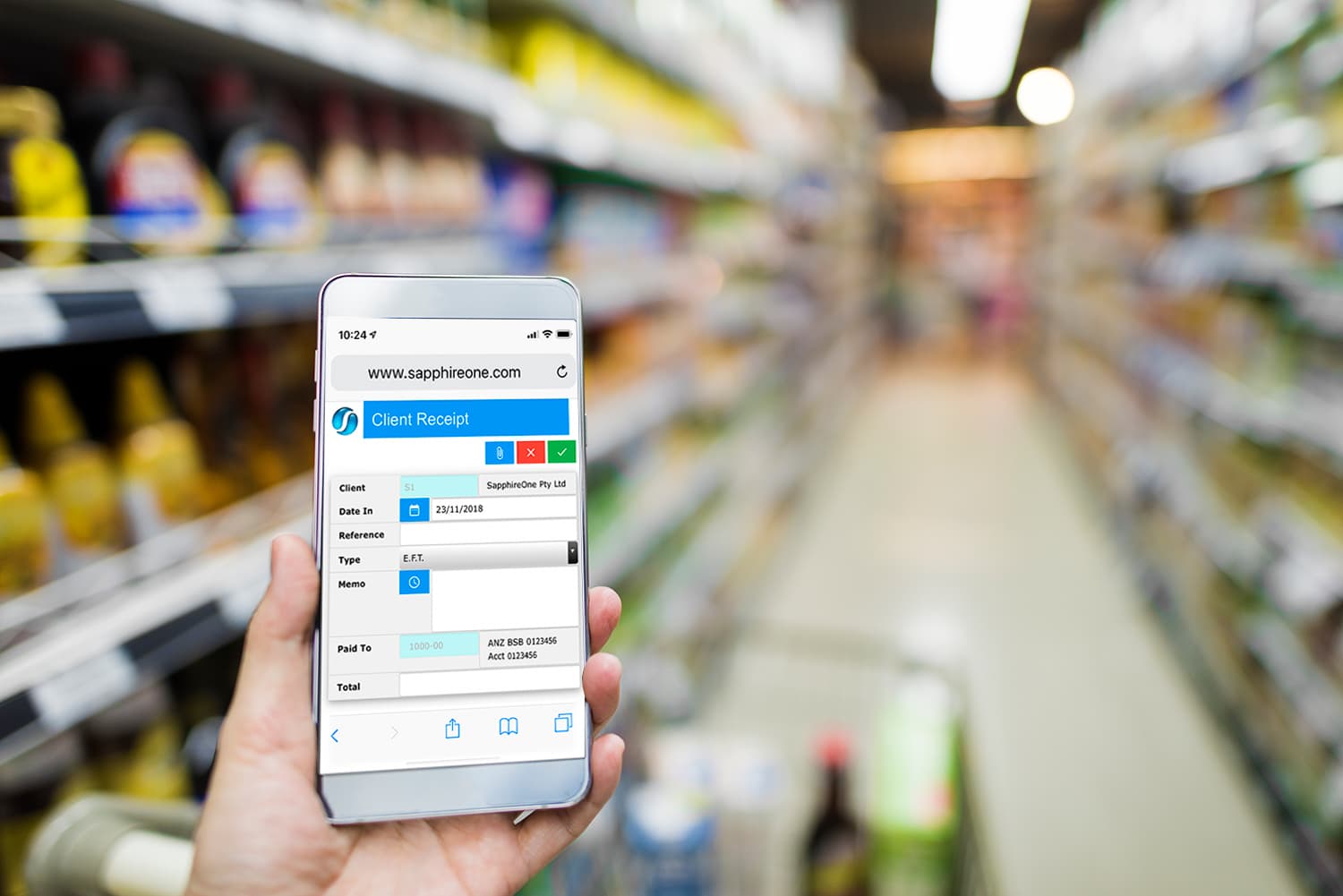Simplify the Financial Reporting Process to Improve Visibility and Allocation of Resources
July 3, 2019 4:17 pm | by John Adams

The financial reporting process to keep internal decision makers and external stakeholders informed is becoming more and more complex every year. Businesses have data coming in from multiple departments and systems, often leaving the financial reporting teams with only half the picture.
Investing in processes through systems and tools can significantly improve their accuracy, process time and results. Automation and software integration benefits the entire business by collating the company data in a single data file, allowing visibility from administration, operations, payroll/HR to finance. Visibility is critical for making informed decisions and allocating finances for resources and project management. Inefficiencies in key financial processes can disrupt operations and cause significant setbacks to your business.
How to simplify your business processes for financial visibility
- Create process maps. This helps to understand how they work and identifies timing and schedules, roles of individuals and teams, functions and organisations, systems and tools, business units, locations etc.
- Once you’ve settled on process maps and highlighted systems to improve, build a management team. This should comprise of a cross-section of dedicated stakeholders who are influential for buy-ins across other departments.
- Examine how to automate your workflows from start to finish to increase efficiency. Once the processes are automated, visibility is increased by having access to real-time data. This helps monitor and analyse performance by identifying inefficiencies and fixing them as they occur. Secure your data by role-based access and look at standardising the recurring and identical processes to simplify replication.
- Identify risks that may result from a breakdown in a process. Investigate how these can be eliminated from multiple data sources, manual steps and any additional steps in a process. Identify opportunities to reduce complexity and increase efficiency through automation, visibility and collaboration.
- Lastly define business rules for decision making. These should be simple and direct so they bypass workflows without delays.
Organise data for a seamless financial reporting process
- Collect and normalise your data by creating flexible templates that enable contributors to submit structured and unstructured data in a consistent fashion. Outline a collection process that facilitates the standardisation of data from all departments. Once the data has been collected, organise the information by developing reporting guidelines, permissions on who can view and edit specific documents, pages, or spreadsheet cells to help preserve data integrity.
- Organise a single source of truth, store your data in one place. This establishes links and an audit trail between source data and all related destinations so any changes are visible and can go through all departments. This ensures, if an error is detected, one person can correct it swiftly and in one place only. Everyone will have the same view and are checking the same data for quality and inconsistencies.
- Store all final reports in a single location. This will simplify the process of searching for the most current data to compile for customised or standard reports, dashboards, workbooks and presentations.
For more information on the benefits for financial management of an ERP System in simplifying the reporting process – SapphireOne ERP, CRM, DMS and Business Accounting Software Application Alternatively, contact our office on (02) 8362 4500 or request a demo.
Complete control for multi-location supermarket and retail chains with SapphireOne ERP, CRM, DMS Business Accounting Application
November 29, 2018 10:17 am | by John Adams

Single location stores can be challenging at times, and when you start to operate a multi-location supermarket and retail chain, new complications and difficulties arise. Efficient management of these multi-locations is the key. Sharing of information and data is fundamental to success.
Because competition is fierce, margins are small within the retail environment, the management of your daily operations becomes imperative.
SapphireOne ERP enables multi-locations access to a shared database. This provides a comprehensive range of business wide processes consolidated into a single unified database. The SapphireOne ERP ensures enhanced efficiency, speed and visibility.
Easy to operate POS systems for multi-location supermarket and retail chain
Sapphire Web Pack POS terminals allow management of business processes from mobile devices. Unlimited users can have access to certain parts of the live data file from any device with a browser. Inventory, stock control and ordering can be performed onsite saving time and money. With real-time data across the multi-location supermarket and retail chain, head office can focus on pricing, inventory management, performance reporting and marketing.
Sapphire POS terminal provides users the much-needed flexibility and lifts restrictions on how and when data can be added into the system. Stock can be transferred from one location to another, clients can be invoiced, and vendors paid on mobile devices with a browser.
Time saving in purchase & replenishment
With the SapphireOne ERP application multi-location supermarket and retail chains have access to data from all points of their business. This enables increased operational efficiencies. Time is saved in purchasing and replenishment through better planning and reduced costs.
Centralised financial control
The SapphireOne ERP application gives the ability to increase and enhance operational efficiencies by managing within the one application. Total visibility at head office ensures improved reporting, planning and greater financial control of your business.
Efficient employee management
SapphireOne ERP Payroll/HR module seamlessly manages employee data and payroll information. Head office can set up pay periods, track history and administer employee history through the easy to use interface. The ERP software ensures sharing of information with employees, management and HR. This sharing facilitates management in making executive decisions on job assignments and how to improve performance.
Some of the features of SapphireOne Payroll/HR include modifying an employee, class, inquiry, award entitlements, leave, remuneration inquiry, allowances, tax, scales, reports, ATO’s Single Touch Payroll and employee benefits.
Acquire new customers, increase sales and profit with SapphireOne
An effective sales process and customer management software equates to greater revenue. SapphireOne ERP, CRM, DMS Business Accounting Application combines integrated business processes with CRM software. This allows marketing to focus efforts on maximising sales and reaching out to new and existing customers. Our ERP, CRM software helps business engage with customers, provide insights, improve efficiencies and ultimately increase sales.
For more information regarding improvements and features within the latest release of SapphireOne ERP Business Accounting Application please contact our office on (02) 8362 4500 or request a demo.
7 Helpful Tips for Financial Controllers
April 23, 2018 5:29 pm | by John Adams

The most important tips for Financial Controllers in any Organisation
-
Bank Reconciliation
Reconciling your bank accounts is a vital part of your daily routine and forms best practise in any organisation. Why is it important to reconcile on a daily basis? because it gives the organisation their current cash position. It is essential that an electronic copy of all past reconciliations performed are retained for control and audit purposes.
-
Financial Reporting
The three most important financial reports in any organisation are Trial Balance, Income Statement/Profit & Loss and Balance Sheet. The purpose of a trial balance is to prove that the value of all the debit value balances equal the total of all the credit value balances.
Income statements will help the Financial Controller determine the past financial performance of the enterprise, predict future performance, and assess the capability of generating future cash flows through report of the income and expenses. A balance sheet summarises an organisation or individual’s assets, equity and liabilities at a specific point in time.
-
Workflow
Workflow rules allow the setting up, performing, and monitoring of a defined sequence of processes and tasks, with the broad goals of increasing productivity, reducing costs, becoming more agile, and improving information exchange within an organisation. Having the ability to set definable limits based on predefined values at a transactional level, an automated process that the appropriate person within an organisation are notified when approvals are required.
-
Sales Pipeline
Identifying the prospect, capturing the initial contact details is the first step in the sales pipeline. When planning for the potential sale it is important to have a structured approach. When you have assessed the potential clients needs and objectives, you can then gain a commitment. Then following up is essential to close the sale and keep the customer engaged for future sales
-
CRM
Contact Relationship Management is an approach to manage a company’s interaction with current and potential customers, Vendors, Projects, employees and assets. It uses data analysis of the contact’s history with a company, to improve business relationships, specifically focusing on contact retention.
The CRM compiles all the data from a range of different forms of communication, including a company’s website, telephone and emails etc. CRM allows a single repository for all contact data and facilitates better relationships within financial controllers.
- Accountability
Absence of accounting means an absence of accountability. Accountability cannot exist without proper accounting practices. User logging is essential to ensure everyone is accountable for their own actions. -
Posting Control
The batching of transactions gives the final control to a supervisor, to verify those transactions are true and accurate before they are posted to the general ledger. Looking to boost your financial management potential with a Dashboard equipped ERP, feel free to contact us or request a live demo.
Looking to boost your financial management potential with a Dashboard equipped ERP, feel free to contact us or request a live demo.
Read testimonial – https://www.sapphireone.com/testimonials/financial-reports
